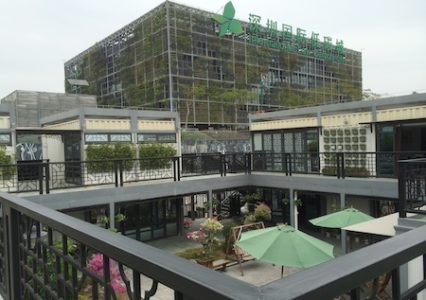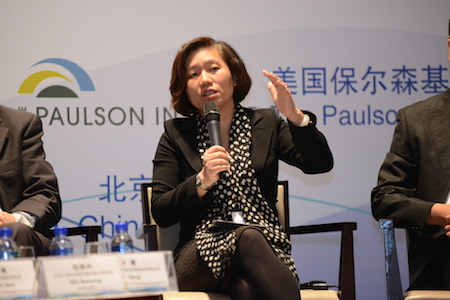By Dorinda Elliott

The most amazing thing about the Shenzhen International Low-Carbon City project, which won the second annual Paulson Institute and CCIEE Prize for Cities of the Future last week, is what the planners didn’t do. Unlike most urban projects in China, they didn’t tear down the preexisting buildings. They didn’t build a bunch of towers, with the hollow expectation that people would move in—an approach that has led to thousands of ghost towns all around China.
Instead, Ye Qing, the head of the Shenzhen Institute of Building Research, and her urban planner colleagues decided to develop a poor neighborhood of the city by focusing on human activity first, and building second. Instead of bulldozing the area, the planners upgraded a handful of buildings and factories, even as they improved the environment (a man-made wetlands project helped clean up the local river, for example). “We are changing the Chinese approach to development, where you clear an area and start from scratch,” says Ye, the dynamo behind the project. “Instead we are going back to the origins of the urban process, which is that human activity comes first, not buildings.”

Lo and behold, those strategic improvements are encouraging the development of high-end, low-carbon industrial projects and economic growth that focuses on the needs of the people living in the district. A dirty old factory that used to grind out low-end, industrial products has been renovated and is now home to a Silicon Valley company that makes 3D printers. An aerospace technology institute is planning to move into another factory across the way. “This is a rolling process,” says Ye. “It’s evolving. We are moving step by step. And it’s all well planned.”
The Shenzhen project, which is in the Pingdi district about an hour’s drive from Hong Kong, so far covers only one square kilometer, but it eventually will encompass 53 square kilometers. The planners have already built a couple of demonstration low-energy public buildings—including an exhibition hall that is a center for education about sustainable building and development—and green outdoor spaces where local residents stroll and relax after work and on weekends. The people-friendly exhibition center serves free coffee to anyone who comes.
Shenzhen’s project is the antidote to the poorly planned canyons of inhuman towers that have cropped up in many of China’s ‘new cities,’ leaving residents feeling alienated, with few services, shops, or modes of public transport. “Developers in China build new cities and think they have solved their urban problems. In fact they have brought the fever down but not cured the illness,” says Ye. “Actually they are creating new problems. We are offering a new model to really improve people’s lives.”


